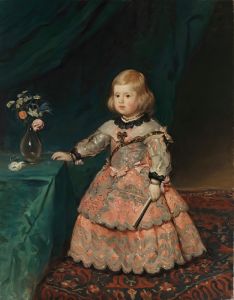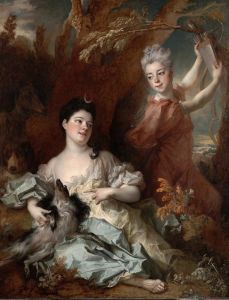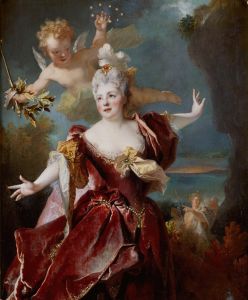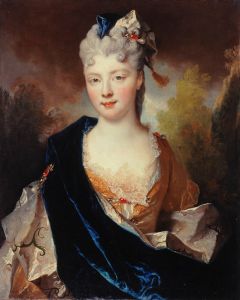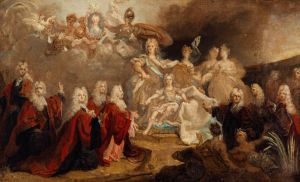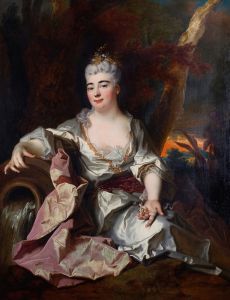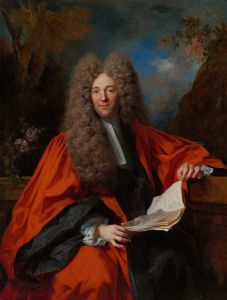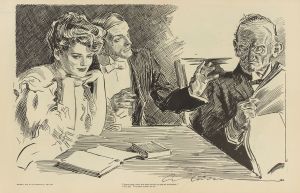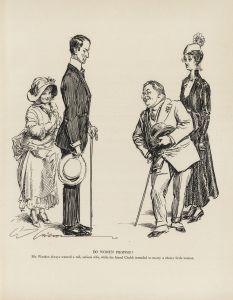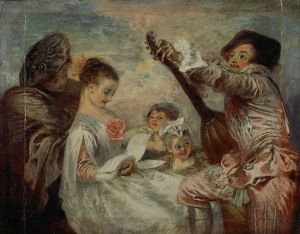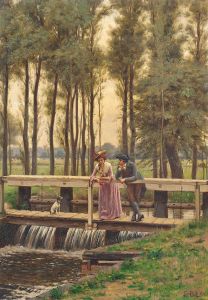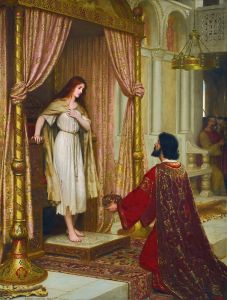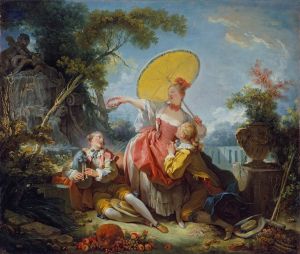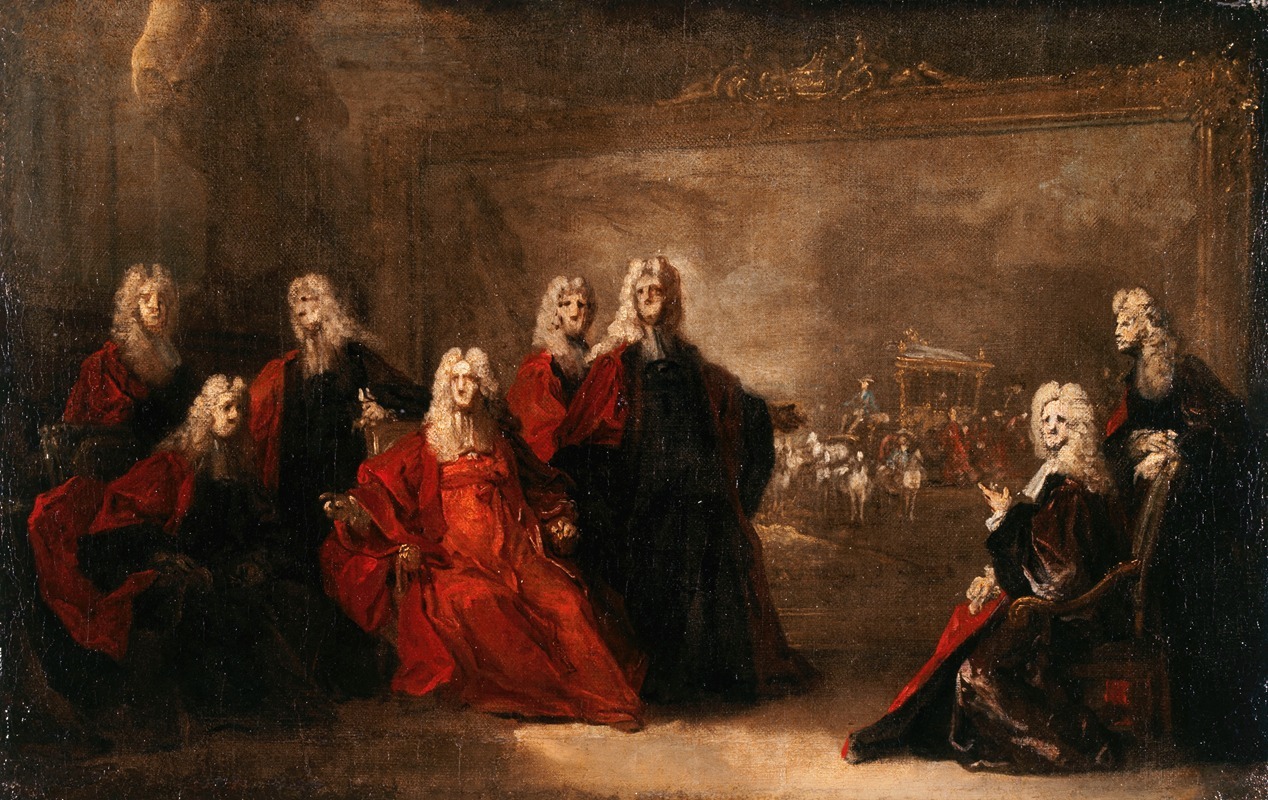
Allégorie des fiançailles de Louis XV avec l’infante Marie-Anne-Victoire d’Espagne
A hand-painted replica of Nicolas de Largillière’s masterpiece Allégorie des fiançailles de Louis XV avec l’infante Marie-Anne-Victoire d’Espagne, meticulously crafted by professional artists to capture the true essence of the original. Each piece is created with museum-quality canvas and rare mineral pigments, carefully painted by experienced artists with delicate brushstrokes and rich, layered colors to perfectly recreate the texture of the original artwork. Unlike machine-printed reproductions, this hand-painted version brings the painting to life, infused with the artist’s emotions and skill in every stroke. Whether for personal collection or home decoration, it instantly elevates the artistic atmosphere of any space.
Nicolas de Largillière's painting "Allégorie des fiançailles de Louis XV avec l’infante Marie-Anne-Victoire d’Espagne" is a notable work that captures a significant historical event through the lens of allegory. Largillière, a prominent French painter of the late 17th and early 18th centuries, was renowned for his portraits and historical scenes, often imbued with rich detail and vibrant color.
This particular painting commemorates the betrothal of Louis XV of France to the Infanta Maria Anna Victoria of Spain. The engagement was part of a diplomatic effort to strengthen the alliance between France and Spain. Louis XV, born in 1710, became king at the age of five after the death of his great-grandfather, Louis XIV. The Infanta, born in 1718, was the daughter of King Philip V of Spain. Their engagement was arranged when Louis XV was just eleven years old and Maria Anna Victoria only three, highlighting the political nature of royal marriages during this period.
The painting is an allegory, a common artistic device used to convey deeper meanings and symbolize broader themes. In this work, Largillière employs allegorical figures to represent the union between the two nations. The composition likely includes personifications of France and Spain, possibly depicted as classical deities or symbolic figures, to emphasize the grandeur and significance of the alliance. Such allegorical elements were typical in artworks of this era, serving to elevate the depicted event beyond its immediate political implications to a more timeless and universal significance.
Largillière's style is characterized by his attention to detail and his ability to capture the opulence of the French court. His use of color and texture would have been employed to convey the richness and splendor of the occasion. The figures in the painting are likely adorned in elaborate costumes, reflecting the fashion and status of the time, and the setting might include luxurious drapery and classical architecture to enhance the sense of grandeur.
While the marriage between Louis XV and Maria Anna Victoria was ultimately never realized—the engagement was broken off in 1725 due to shifting political alliances—the painting remains a testament to the diplomatic strategies of early 18th-century Europe. It also serves as an example of how art was used to document and celebrate political events, as well as to convey messages of unity and cooperation between nations.
Largillière's work, including this allegorical painting, is an important part of the Baroque tradition in French art, reflecting both the artistic and political currents of his time. His ability to blend portraiture with allegory allows viewers to appreciate not only the historical context of the painting but also the skill and creativity of the artist. The painting stands as a historical document, capturing a moment of potential unity between two powerful European nations, even if the intended marriage never came to fruition.





